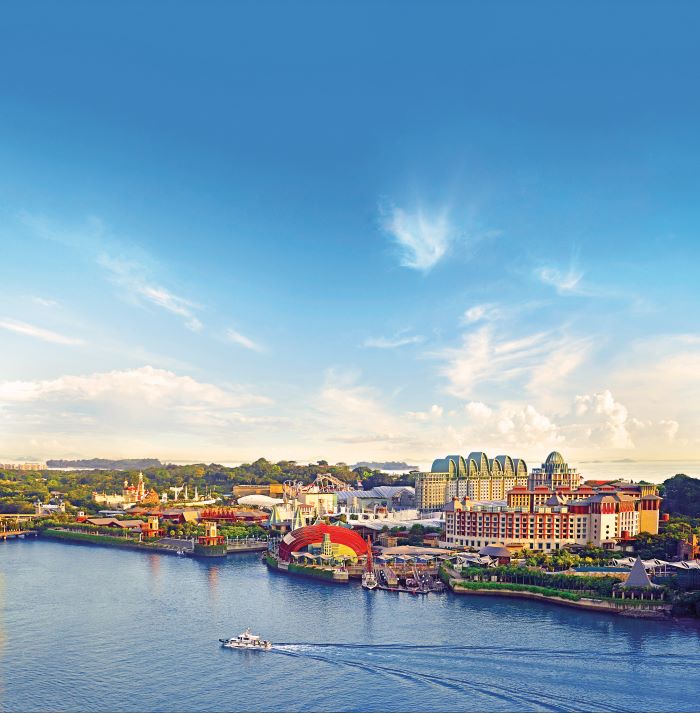Indian hospitality sector shows significant shifts, spurred by infrastructural developments & new tourism avenues, promising a transformative growth trajectory in 2024.
Jaideep Dang
India’s growth story in 2023 was marked by significant milestones, with infrastructure grabbing the limelight as the main catalyst. The real estate sector has been a direct benefactor of these targeted initiatives, as commercial, residential, and industrial segments displayed record-breaking performance. Buoyed by this, the hospitality sector displayed a subtle yet fundamental shift in its growth trajectory, indicated not only by standard indicators such as occupancy and ADR, but also by the emergence of new avenues of tourism, which will influence the sector in years to come.
Infrastructural growth in the country has catapulted over the last couple of years. In FY 2023, the number of airports increased from 148 with passenger traffic touching 320 million, which is a 57 per cent jump from FY 2019 volume. In the same period, the total length of national highways increased by 11 per cent, port development saw an uptick in coastal cities such as Trivandrum in Kerala and Vadhavan in Maharashtra, and the Indian Railways crossed ₹63,000 crore in passenger traffic revenue in FY 2023 for the first time. The Amrit Kaal Vision 2047 displays the growth map for infrastructural upgrades that envisions the emergence of multiple growth corridors, supported by strong domestic demand, widening middle-class demography, and increasing connectivity.
As a real estate services company, our expertise spans across several asset classes. In the recent past, we have witnessed the boom of the commercial, logistics and industrial sectors, which can be witnessed in record-high leasing volumes and lower vacancy rates. In 2023, India’s office markets recorded leasing activity to the tune of 63 million sq ft, breaking all previous records with the second half of the year being especially strong. The logistics and industrial sector also saw stable performance in 2023, with demand for Grade A compliant warehouses recording a vacancy rate of 6 per cent compared to the overall sector vacancy of 10.6 per cent. This performance is testimony to the robust underlying growth potential of the Indian market and solidifies our position as an office and industrial hub to reckon with.
Another notable trend in the travel and tourism sectors is the successful exploration of emerging markets, in addition to Tier I cities. This can be seen prominently in Ayodhya, where the recent unveiling of the Shri Ram Janmbhoomi Temple and the opening of the Ayodhya International Airport have attracted remarkable interest from hotel developers and investors. The Indian government has implemented effective tourism policies such as Swadesh Darshan and PRASAD schemes, utilising branding and marketing campaigns to tap into the tourism potential of
Northeastern states and improving air connectivity to these destinations. The medical tourism sector has also experienced growth, with 0.6 million foreign tourist arrivals (FTAs) in 2022, a mere 7 per cent less than 2019. Furthermore, the government’s proposal to allocate ₹2,450 crores for the development of key religious sites and increased allocations for schemes like Ayushman Bharat-Pradhan Mantri Jan Arogya Yojana (PMJAY) indicates further expansion opportunities for India’s travel and tourism industry.
Supported by the performance in the above-mentioned segments, the hospitality sector claimed its own share of the growth story with the number of branded hotels signings and openings growing by 27 per cent as compared to 2022. Branded hotel penetration in India reached an all-time high of 52 per cent as of December 2023 with the midscale segment accounting for the highest share in both, signings and openings. The luxury and lifestyle segment is also growing at an accelerated rate and in tandem with complementary industries such as wellness and F&B, among others.
Hotel investments have also been on the rise as the year ended with US $420 million in total investment value. While Tier I cities continue to take up the mantle in terms of the total transacted volume, we have also observed a keen interest among investors in Tier II cities and other emerging markets, for greenfield hotel development, buildouts, and operational hotels. Private equity/institutional capital and HNIs have emerged as the primary sources of capital for such transactions, closely followed by real estate developers.
As we step into 2024, the hotel industry is on the verge of a momentous change. With structured government initiatives delivered through policy, budget allocations and infrastructure development, India is geared to unleash its untapped potential and burgeoning latent demand. In light of this, we infer that the hospitality sector will gain stronger momentum due to a resultant increase in newer avenues of hotel demand emerging across the country. This will be further complemented by rising disposable income, airport and complementary developments, and infrastructural upgrades, which in turn will lead to growing interest from hotel developers and investors who want to be a part of this pan-India growth story.
Given this, yes, we do believe that the best is yet to come.
(The views expressed are solely of the author. The publication may or may not subscribe to the same)
“A notable trend in travel & tourism sectors is successful exploration of emerging markets, in addition to Tier I cities.”
“Midscale segment accounted for the highest share in both, signings and openings.’
- Jaideep Dang, Managing Director, Hotels and Hospitality Group, India, JLL









